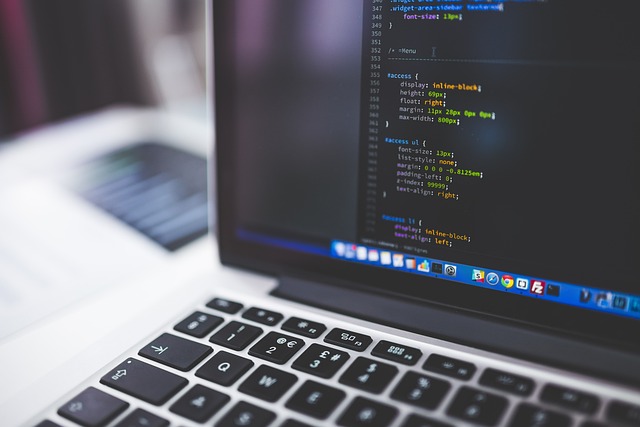What if you could have your favorite meals prepared and delivered to your doorstep? What if there was technology that could customize meals based on your nutritional needs? How about a mobile app that could assist you in preparing your own meals? These are the possibilities be considered by companies who are paving the way for advanced technology in the culinary world.
According to Harvard Business Review and Forbes, large scale restaurants and food businesses are facing challenges like standardization of quality, wastage of food and lack of personalization for customers. Particularly in growing economies like the United States, the food industry is yet to leverage technology to its full potential, to confront these issues and refine corresponding solutions. Moreover, the increasing demand for healthy and personalized food options broadens the avenue for technological interventions in this sector.
In this article, you will learn about software development trends in the food tech space. You will get an in-depth analysis of how certain companies are reshaping the landscape of the culinary industry through technology. Companies using Artificial Intelligence, Machine Learning, and various other technologies to optimize food delivery, minimize waste, and enhance the customer experience, will be explored.
Get to know the companies revolutionizing the food technology sector, understand their methodologies, and how they are overcoming the existing challenges. Witness how these trailblazers are setting the pace for a technologically enhanced culinary world.

Definitions in the Intersection of Software Development and Food Technology
In the context of Software Development for Food Tech, we unravel two major components – software development and food technology.
Software Development is the process of creating a software application from scratch. It involves planning, designing, coding, testing, and maintaining the application. Developers use programming languages and frameworks to turn a concept into a functional, user-friendly software.
On the other hand, Food Technology is a branch of science that deals with modern techniques and systems used to produce, distribute, and consume food. This field involves creating more efficient ways to deliver fresh, nutritious, and safe food to consumers. Connecting the two, software development for food tech involves creating digital solutions to optimize food production, delivery, and consumption.
Breaking Bread and Stereotypes: How Food Tech Companies are Serving Up Innovation in the Culinary World
Driving Transformation Through Innovation
The world of gastronomy and food technology has experienced a major shift due to advancements in software development. Tech companies are stepping up their game, employing intricate algorithms, cutting-edge machine learning techniques, and sophisticated data analytics to catalyze change in the culinary industry.
From streamlining restaurant operations and boosting food delivery systems to optimizing nutrition and dietary planning, companies are essentially ‘chewing’ on innovation to create transformative food tech solutions. The advent of sophisticated software development tools, combined with a robust global demand for effective, sustainable, and innovative food solutions, ignites this surge of creativity in the food tech sector.
Digitizing the Culinary World
One key aspect of this ongoing disruption lies in the digitization of the culinary world. The rise of smart kitchen appliances fuels innovation in this realm. For instance, Wi-Fi-enabled cooking appliances can be programmed remotely, refrigerator apps can track freshness and recommend recipes based on available food items, and software-enabled 3D printers can create edible designs.
Software applications are also making a significant impact on restaurant management. Advanced POS systems, digital menus, table turn analytics, and customer loyalty program management are dictating the food service business dynamics.
Simultaneously, companies are steering towards custom tech solutions tailored to their specific needs. They’re no longer using a ‘one-size-fits-all’ approach, but focusing on software that can be modified as their business demands change.
- Data-Driven Decision Making: Software tools provide managers valuable insights into customer behavior and trends, operational tight spots, and overall business performance.
- Elevated User Experience: Tech-based advancements like interactive menus, online table reservations, and AI-based food customization are all geared to improve the dining experience.
- Streamlined Supply Chain: Food tech companies are leveraging software to automate supply planning, inventory management, and real-time tracking of food products to minimize waste and maximize efficiency.
With the continued advancement of software development, the food tech industry is becoming more and more intertwined with digital technology. The goal is to enhance food production, delivery, and consumption in a sustainable and more efficient way. This technological revolution is not just improving our relationship with food but also shaping the future of the culinary world. From fine dining restaurants to home kitchens, software development has left no stone unturned in gastronomy. The intersection of tech and food has opened a world of possibilities that we are just beginning to tap into.
Is Technology Enhancing or Overpowering Culinary Arts?
In the era where technology is rapidly evolving and dominating every sphere of life, a new question arises – is it enhancing or overpowering culinary arts? The advent of software development has undeniably made a striking impact on how we prepare and perceive food. At the heart of this transformation are innovative startups that are turning the Silicon Valley heads. They are bringing a fresh perspective to the culinary world by integrating cutting-edge technologies into traditional practices, thereby creating a blend of authenticity and modernity. This new wave of tech-driven gourmet experiences is changing the landscape, redefining boundaries and expectations. Though it’s reshaping the way we cook, eat, and enjoy food, it’s posing new challenges and potential drawbacks that cannot be overlooked.
The Inevitable Dilemmas of Tech-Dominated Culinary Practices
Technology’s imprint on food tech startups is raising a string of complex dilemmas. At the core of the problem lies the question of whether it’s appropriate to let software development dictate the culinary practices. Traditional cooking is an art form; it involves human touch, creativity, and spontaneous variations that cannot be precisely replicated by machine learning algorithms or data analysis. On one hand, technology allows for scalibility, consistency, and efficiency; however, on the other hand, it threatens the very essence of cooking – its unpredictability and craftmanship. There’s also the issue of overreliance on technology possibly leading to a decrease in human skills and knowledge in the kitchen, which could further undermine the culinary world’s authenticity and charm.
Pioneering Food Tech Startups: A Paradigm of Successful Integration
Despite the challenges posed by the technology integration into the culinary world, various food tech startups have skillfully navigated this tricky terrain. They found a balance between employing technology to enhance culinary practices without losing the charm and authenticity of the cooking process. For instance, startups are using technology to revolutionize recipe creation, food ordering, and even cooking itself. They’ve helped democratize gourmet dining by allowing anyone to cook restaurant-level dishes in their own kitchen, thanks to the assistance of smart appliances and artificial intelligence. Moreover, food delivery startups have revamped the idea of dining, enabling consumers to get meals delivered to their doorstep from any cuisine of the world. Similarly, meal-kit delivery services have successfully bridged the gap between homecooked meals and restaurant-quality dishes by providing pre-portioned ingredients and guided cooking instructions to the masses. Hence, these best practice examples depict how technology can indeed coexist harmoniously with culinary practices without diminishing the essence of culinary arts.
From Farm to Smartphone: Reimagining Restaurants through the Lens of Food Tech
Embracing the Power of Digital Transformation in Food Tech
Why has the food tech industry not yet fully exploited the boundless capabilities of software development? Remarkably, the integration of advanced software applications into food tech undoubtedly disrupts the culinary landscape, creating an entirely new business playing field. The fusion of these two disparate sectors brings forth ingenious culinary techniques, thereby redefining customers’ dining experiences.
The beauty of software development in food tech lies in its ability to optimize food production and distribution processes. Developers create algorithms that cater to a myriad of culinary needs, ranging from food preparation to meal delivery. These developments mean that customers now enjoy an unprecedented level of convenience and a broader range of food choices.
Unwrapping Challenges in the Implementation of Software Development for Food Tech
In spite of the endless possibilities software development has brought to the food tech industry, the journey towards total digital transformation is not entirely smooth. A significant barrier is the inability of some companies to keep pace with the swift evolution of technology. This lag slows down the entire digital transformation process, hence stifling innovation.
Equally important are issues about data privacy. As food companies venture into the digital sphere, they handle vast amounts of sensitive customer data, which are attractive to cyber criminals. The daunting challenge here is ensuring robust data protection while maintaining the speed of digital innovation. Additionally, the integration of software into food tech brings a set of new customer demands. With increasing tech-savvy consumers, food tech companies are pressed to consistently offer impressive tech features to meet these demands.
Real-life Applications: A Look at Software Development Trailblazers in Food Tech
Amidst the challenges, several food tech giants have successfully integrated software development into their businesses with massive results. Companies like Blue Apron and HelloFresh thrive in the industry thanks to their personalized meal delivery systems powered by sophisticated software solutions. These software packages manage customer preferences, dietary restrictions, and delivery logistics, all while ensuring data security.
Moreover, companies like Chowbotics have ingeniously automated food preparation. In the forefront of software-powered food preparation, Chowbotics’ robots can create customized meals in minutes, demonstrating a revolution in the fast food industry.
With such examples, it becomes clear that the power of software development in food tech is more than just a trend. It is indeed a big leap towards the future of the culinary world. With time, it won’t be surprising to see a wider acceptance and utilization of software development in food tech, reshaping the culinary world even more.
Conclusion
As we stand on the brink of massive technological innovation, we must ask, how will these advancements directly affect the culinary industry? Not only are tech companies simplifying the food service process, they are revolutionizing the very way we conceptualize food and cooking. These companies are pushing the boundaries of what is possible, marrying gastronomy with cutting-edge technology to deliver remarkable culinary experiences. Not only does this drive efficiency and sustainability, but it also promises to reshape our food culture and diet in ways we could not have imagined a decade ago.
If this intersection of food and technology fascinates you as much as it does us, we encourage you to continue accompanying us on this digital culinary journey. By following our blog, you will be the first to know about the latest food-tech trends, groundbreaking startups, and incredible innovations that will define the culinary landscape in the coming years. Sharpening your digital knife, as it were, will not only keep you abreast of current trends, but will also prepare you for the future of gastronomy – a future where technology and tradition converge to create the ultimate dining experience.
Sadly, we must now put our digital pens down and bid you farewell. But fear not, for our culinary exploration is far from over. In our upcoming releases, we will be serving you fascinating insights into next-gen food tech startups, sustainable practices in the industry, and exclusive interviews with pioneering entrepreneurs in the field. We promise to keep your intellectual palate satiated. Remember – the future of food is being written in code, and we are here to decode it for you. Stay tuned for our next big reveal!
F.A.Q.
What is the role of software development in food technology?
Software development in the food technology space plays a pivotal role in enhancing efficiency, customer interactions, and quality standards. Through the use of algorithms and data analysis, it helps businesses to monitor food inventories, ordering processes, consumption patterns, and nutrient compositions.
Which companies are leading the revolution in culinary technology?
There are several companies at the forefront of this revolution such as Uber Eats, Doordash, Zomato which focus on delivery aspects, while others like Blue Apron and Hello Fresh are leading the meal-kit industry. Additionally, companies like Apeel Sciences are revolutionizing food preservation and waste management using advanced technology.
How does software development enhance the customer experience in food technology?
Software development has improved customization, personalization, and accessibility in food technology. It enables functionalities such as tracking delivery, dietary preferences, setting meal plans, accessing various recipes, and processing payments, resulting in a more personalized and convenient customer experience.
How significant is artificial intelligence and machine learning in food tech?
Artificial intelligence (AI) and machine learning (ML) are tremendously vital in food tech, especially in understanding customer behavior, predicting trends and demand, and automating processes. Companies utilize AI and ML to optimize supply-chain management, save costs, reduce food waste, and ensure customer satisfaction.
What could be the future trends in software development for food technology?
The future of software development for food tech could focus on enhancing food safety measures, integrating blockchain for supply chain transparency, developing smart kitchens, and implementing virtual reality for training purposes. Personalized nutrition based on body composition, metabolism, and genome could also be a significant trend.


